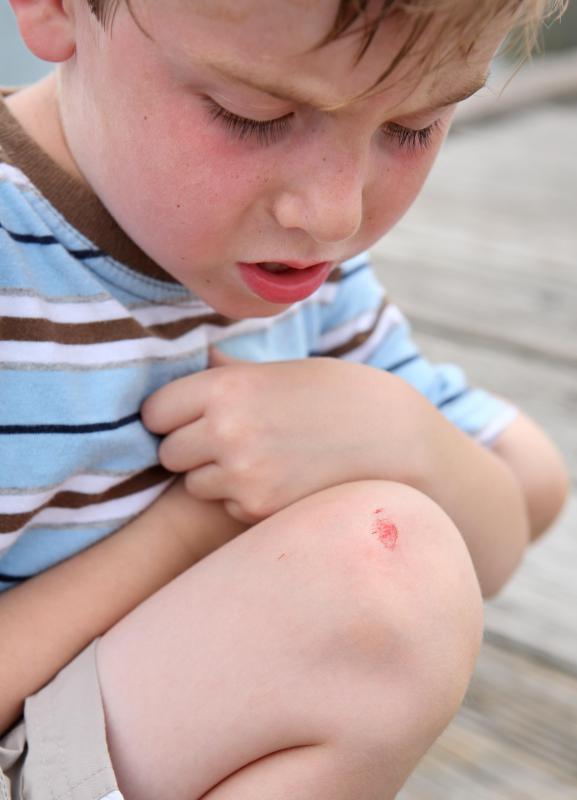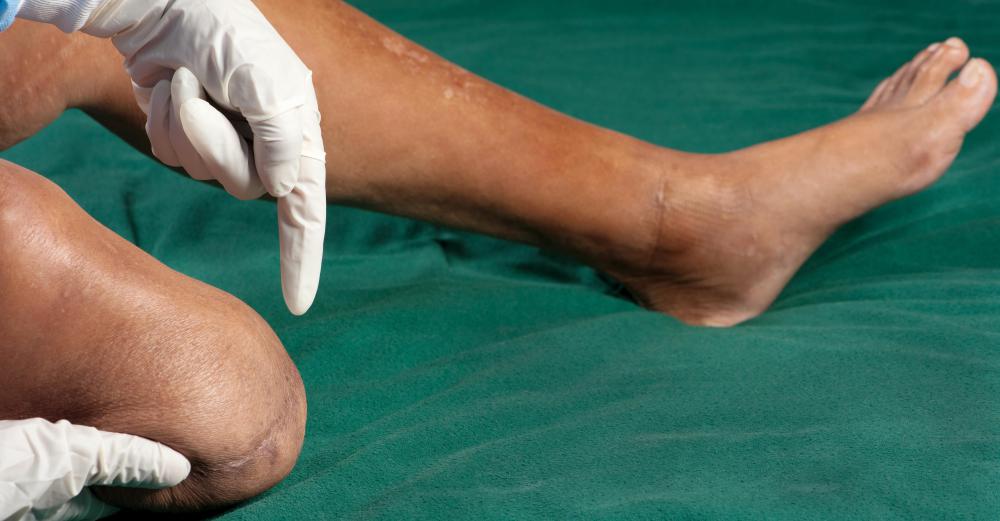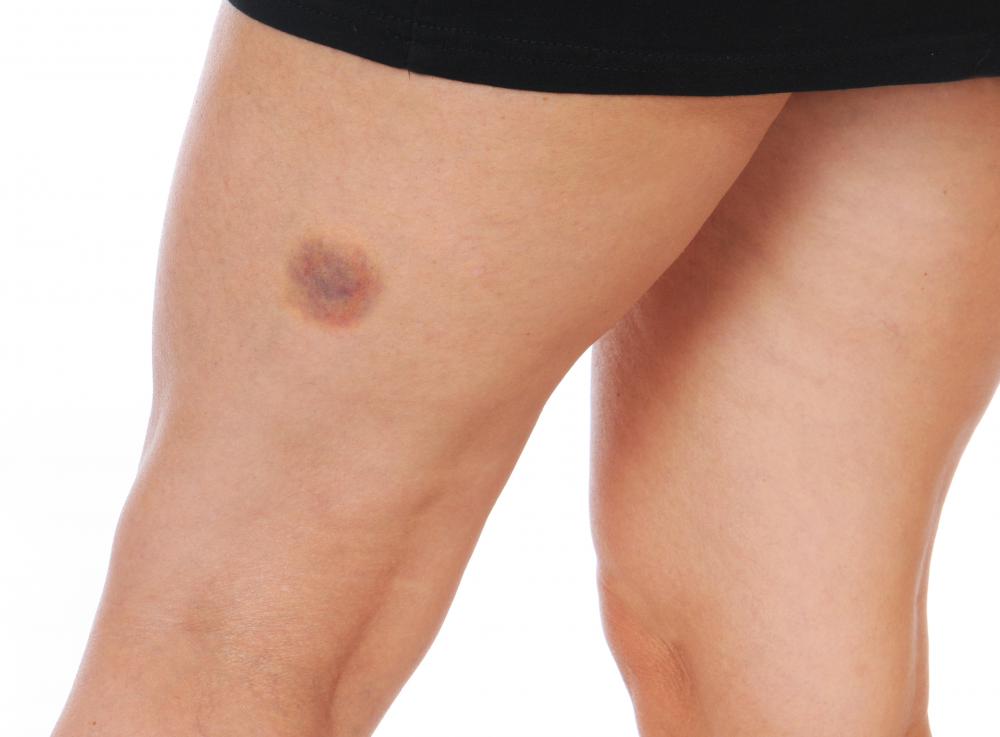At TheHealthBoard, we're committed to delivering accurate, trustworthy information. Our expert-authored content is rigorously fact-checked and sourced from credible authorities. Discover how we uphold the highest standards in providing you with reliable knowledge.
What are Different Types of Wounds?
There are many different types of wounds ranging from mild to severe to potentially fatal. Contusions, small incisions, and abrasions tend to be non-threatening, though some may pose the risk of infection. Deep punctures, avulsions, and amputations, however, may be life threatening. In most cases, the risks posed by all types of injuries differ in severity based on the instrument causing them, the ease of blood flow, and the cleanness or jaggedness of the edges of the damaged skin.
Generally, the least severe type of injury is a contusion. Resulting from forceful contact to the skin, outer skin tissues from contusions generally appear intact and minimally harmed. They often appear as a discolored bruise and require little care. The risk of a deep hematoma, in which an abnormal amount of blood clots in a particular location, may be very serious though also unlikely. Despite the general lack of severity associated with most types of contusions, hematomas in or near the brain may be fatal.

Incisions are typical injuries caused by knives, razors, or glass pieces. Cuts tend to be clean, and the wound tends to bleed easily and freely. As flowing blood prevents microbes from entering, there is generally little risk of infection from incisions.
Sometimes skin is torn rather than cleanly cut, resulting in wounds known as lacerations. Such an injury has jagged, uneven edges, often caused by dull knives or machinery. Due to the possibility of dirt, grease, or other foreign objects being present in the instrument causing the wound, lacerations a prone to infection. The potential depth and irregular edges create an area which bacteria and other microbes may easily penetrate.

Punctures are similar to incisions, though with a small opening. Sharp objects such as nails, needles, or bullets may cause a puncture wound. Although punctures are often non-severe and possibly even medically sound, as is the case with vaccinations, bullet wounds and other deep punctures may pose infection and internal bleeding risks.
Abrasions, often known as scrapes, may be mild or severe types of injuries. Surfaces such as rugs, asphalt, or ropes rub against the skin, scraping shallow layers of the skin's surface. Due to close contact with materials in the surface scraped against, abrasions are susceptible to infection.

Another type of wound, known as an avulsion, takes place when skin tissue is physically torn away from a body part. Bleeding from avulsions tends to be heavy. The skin tissue can sometimes be re-attached to the body part it was torn from, pending its being salvaged quickly and with proper sanitary procedures.
One of the most potentially severe injuries is an amputation, in which a limb is removed from the body. Surgical amputations are performed by medical professionals, whereas traumatic amputations occur in hazardous situations. Heavy bleeding is imminent and the patient will go into shock. Re-attachment of the limb is often successful, and bleeding may be stopped or slowed with a device known as a tourniquet.
AS FEATURED ON:
AS FEATURED ON:


















Discussion Comments
My husband had a sore on the ball of his foot. I soaked it in Epsom salt. Before that it blistered and formed a pocket and erupted filled with blood. Now he slugged some skin and there's a small white core in the center. Help I don't know what to do now. --Jan
Post your comments